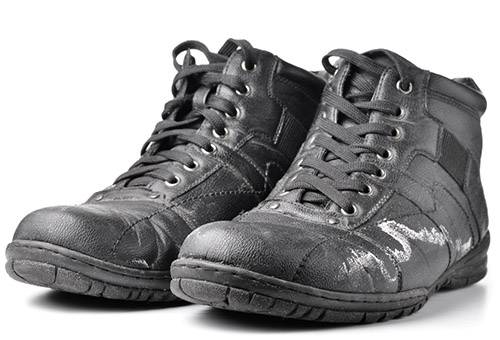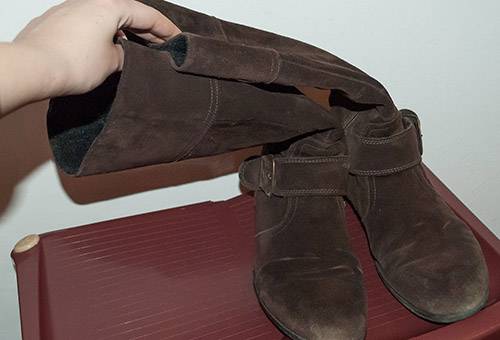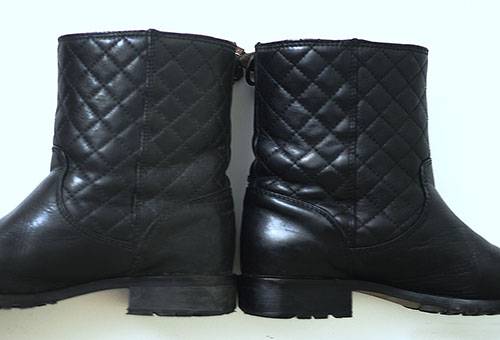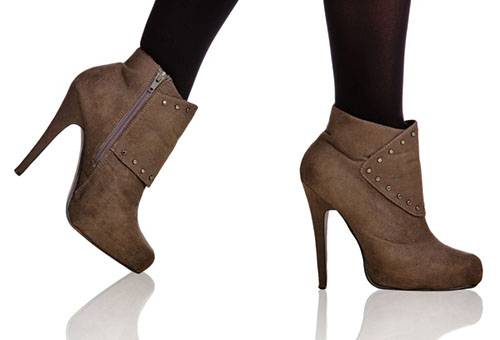How to reliably protect and clean shoes from traces of reagents?
Content:
To save the urban population from injuries and falls in the winter, cleaners generously sprinkle sidewalks with special tools. Reagents corrode not only snow and ice, but also the surface of shoes. In the best case, the boots will be covered with white stains that can be removed. At worst, shoes can no longer be saved. Water repellent is not able to provide reliable protection. Using the right methods, you can protect shoes from natural and artificial materials.
Reagent Properties
A favorite tool of our janitors is sodium chloride with the addition of sand or other salts. This tool is the cheapest, and snowdrifts and ice are melting right before our eyes. It is not recommended to be used, because salts corrode car bodies, spoil asphalt, corrode water pipes and corrode cultural monuments. What can we say about harm to animals and soil? Unlike the environment, shoes can be protected from chemicals.
The highest salt concentration is concentrated in snowdrifts and melt snow on the side of the road. The most generous amount of reagents is poured onto the roads to prevent icing. A mixture of slush and a chemical is pushed by the wheels to the side of the road. When crossing the road, try to walk along the pedestrian crossing, and on the sidewalks go in the center, and not from the side.
The fresher the stains on the surface of the shoes, the easier it is to clean them. When you come home, do not pull with the removal of salt from leather, suede or nubuck boots.
Winter shoe protection
Shoes made from any material other than rubber suffer from antifreeze. Many people think that it is enough to treat the shoes with a water-repellent spray, and you are not afraid of reagents. This simple method does not give any guarantees, but enjoys good reviews. However, you need to process the boots at least 3 times, waiting until the previous layer is completely absorbed into the material.
One of the “grandmother’s methods” to protect shoes is to spread them with a piece of lard or beeswax. Nowadays, there are more “pleasant” methods, especially as lard can leave stubborn stains of fat on shoes. Impregnating leather boots is advised with a special cream based on beeswax or mink fat. This should be done not before leaving the house and dipping the boots in a mixture of snow and reagents, but at night so that the oil is absorbed deep into the fibers of the material.
Shoes made of suede or nubuck should be put aside in a cupboard until the weather is drier and sunnier, but if there is no choice, take care to protect it in advance. Oil and greasy creams glue the pile and leave greasy marks. The only available remedy is a spray with an oil content that repels water, and with it chemicals. Suede surface treatment should be done a few hours before leaving the house.
How to save leather boots?
After a walk on a warm winter day, you can find white stains on your favorite boots. These are the consequences of the generosity of janitors scattering breech salt to the right and left. Wipe leather shoes with a damp cloth, not waiting for the stains to dry. Remove any remaining water with a paper towel or dry cloth.
You can clean stains with:
- vinegar
- sunflower oil;
- castor oil;
- water-alcohol solution.
Mix vinegar with water in a ratio of 1: 2. Moisten a cotton pad in the solution and treat the surface of the boots without losing seams and joints. Instead of vinegar, you can use alcohol. It shows excellent results in removing stains.After treatment, wipe the shoes with a dry cloth to remove any residual solution. Leave them to dry at room temperature. To remove stains with oil, moisten a cotton pad in it and rub the boots, paying special attention to the seams. After drying, treat the boots with cream and polish with a soft cloth. If in some places it was not possible to clean the stains, paint them with cream of a suitable color.
Tip
Never put leather shoes on a battery; it should dry at room temperature.
Suede and nubuck shoe rescue
Wait for the suede pair of boots to dry completely. After that, you need to remove the stains with a special brush. If it is not possible to clean the stains, prepare a special shampoo. Add some liquid soap (preferably baby soap) and a few drops of ammonia to the water. Foam the solution and treat the boots with a sponge. If the product does not show results, wipe the surface with a weak solution of vinegar.
If no remedy has helped to repair damaged boots, hold them above the steam, treating them evenly on each side. After that, raise the pile with a suede or nubuck brush. To clean textile-coated boots, use a solution of water and ammonia. But it is better to put off such shoes until drier days.
Protection against technical salts is the best way to preserve your favorite boots. Avoid snowdrifts and "porridge" from dirt, chemicals and ice. Better go along the puddle than along the side of the road with melted snow. In winter, it is better to wear two pairs of boots alternately, so that they have time to dry out and soak with protective equipment. Do not forget that rubber galoshes have returned to fashion. They are not afraid of either snow or rain.



